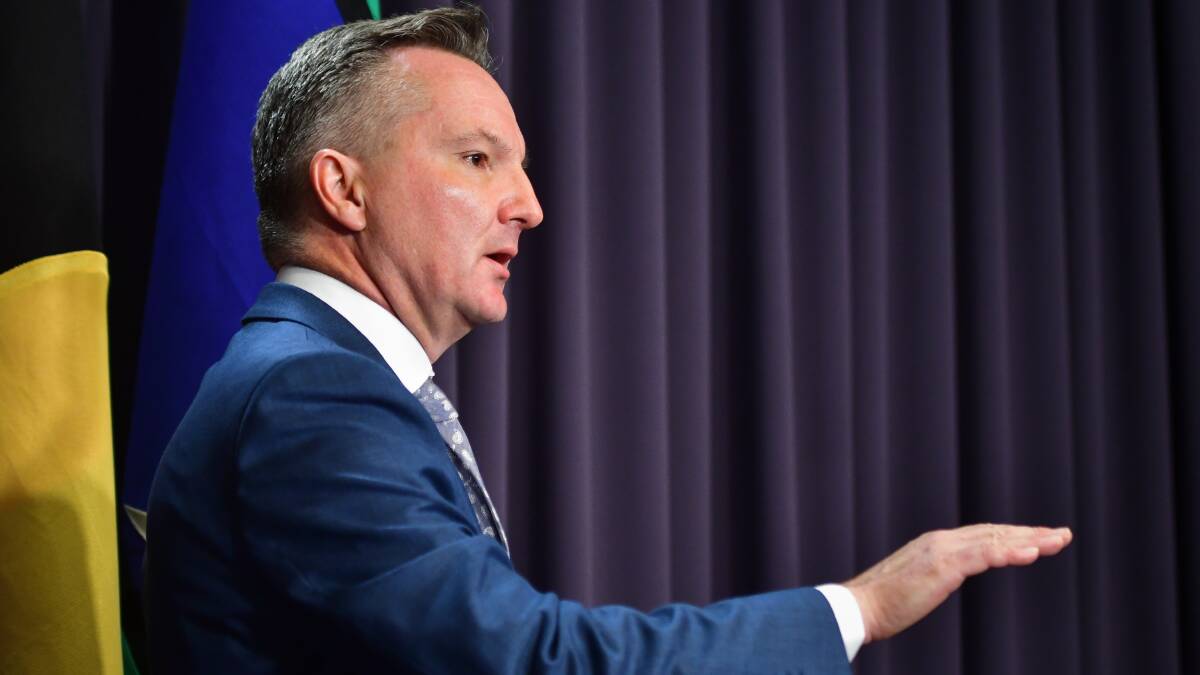The federal energy minister, Chris Bowen, says the states can implement a new capacity mechanism in the national electricity market in ways appropriate for their needs as long as the arrangements are consistent with the Albanese government’s 2030 emissions reduction target.
Amid soaring energy prices, blackout threats in five states, and the suspension of the wholesale electricity market, the Energy Security Board (ESB) has recommended that coal and gas plants be paid to have generation capacity available as the grid transitions to low-emissions alternatives.
The ESB’s proposal could have been controversial, with states arguing that any capacity mechanism must favor renewable technologies. Still, Bowen said on Monday the states would have the discretion to implement the backup generation “in a way which is suitable for their particular purposes and needs”.
Bowen said the generation mix differed in different parts of the country, with Queensland having younger coal generation assets. “It’s appropriate that states can implement this in a way that suits their needs, but it will be within that national framework, and it will complement our emissions target,” he said.
Bowen said settling the design of the capacity mechanism was necessary to ensure an orderly transition to firmed renewable energy, providing the national policy framework that had been missing under the Morrison government and then energy minister Angus Taylor.
He said federal, and state energy ministers had agreed to develop a joint roadmap for the transition to net zero emissions by 2050; he Hed the agreement to provide stand-by generation from coal and gas would not disrupt Labor’s 2030 target, a 43% emission cut.

New South Wales and Victoria are among the states that have welcomed proposed changes to the market to pay for future idle capacity to reduce blackout risks. Still, analysts predict there will be heated debates over a new market’s final design and necessity.
The NSW energy minister, Matt Kean, said details of a capacity market, as outlined on Monday in a design paper by the ESB, appear to work “hand in glove” with the state’s Electricity Infrastructure Roadmap.
“We have a legislated requirement to deliver capacity,” Kean said. “We’re very happy with our plans to ensure that we maintain system stability as we transition [off fossil fuels]. But obviously, we always preferred this to be driven by the national energy market.”
The contentious parts of the ESB paper center on whether consumers will pay to keep coal and gas-fired power plants operating and how much they will pay. The national electricity market (NEM), which serves eastern states and South Australia, is now an “energy only” market, which does not reward spare capacity.
The recent turmoil in the NEM, which included soaring power prices and a shortage of supplies that prompted the suspension of the wholesale market, has provided an early test for the Albanese government and Bowen. A key element of the market design would be allowing individual jurisdictions to set their paths, including avoiding support for old coal plants.
The prime minister, Anthony Albanese, said in Melbourne on Monday that a capacity market was “an insurance scheme into the energy system, and that seems to me to be a bit of common sense”.
“States will make their own decisions, and what I will do as prime minister is to consult and work collaboratively with state and territory governments,” he said.
Sign up to receive the top stories from Guardian Australia every morning
The Victorian premier, Daniel Andrews, said the ESB paper’s design was “more technology agnostic than it might otherwise have been” because of insistence by states such as his that they would not be paying coal plants to extend their operations.
“Let’s be clear about this,” Andrews said. “The future is about renewables, whether wind or solar or battery storage, particularly when it can firm up and turn into baseload synchronous energy.”
Earlier, Victoria’s energy minister, Lily D’Ambrosio, welcomed the ESB’s design, confirming that her state’s approach would be able to proceed under the plans for a post-2025 market.
“We have always been clear that a capacity market operating in Victoria would make payments to zero emissions technologies, not fossil fuels,” she said.
Tennant Reed, a senior energy policy adviser to the AiGroup, said the last meeting of energy ministers during the Morrison government had agreed on the opt-out provisions for every jurisdiction. “How something would work in practice with a bunch of opt-outs, I don’t have my head around yet, and I wouldn’t be surprised if nobody does,” he said.
The challenge for the final design will be minimizing the eventual cost to consumers of any capacity support scheme and tailoring the plan so that it deals efficiently with long- and short-duration storage, Reed said.
“We are going to need the new flexible capacity to absorb the volume of renewables or the proportion of renewables we can have,” he said.
In rare shortfall events – such as when a lack of wind occurs simultaneously with reduced solar power – costly assets such as gas-fired plants may be needed. But for minor daily shortfalls of supply when the sun sets and households turn on appliances – batteries and gas-peaking generators will be able to fill the gap.
Either way, aging and increasingly unreliable coal plants are unlikely to be the answer, Reed said. “Whether they’re formally included or not, it’s probably going to be mostly other assets that are the players.”











